
- Patients to be transported to an Emergency Department with successful Peripheral IV Access or External Jugular Access whose clinical presentation warrants pre-hospital blood sample collection.
- Patients 16 years and older
- Any patient whose clinical condition does not warrant IV cannulation.
- Where prehospital blood collection will delay life saving treatment
- Patients <16 years old.
Key Aseptic Terms for Prehospital Blood Sampling
- Key Sites:
- Bung
- Key Parts:
- Multi-sample Adapter
- The acquisition of pre-hospital phlebotomy has proven to result in shorter ED times by having the bloods sent to the lab earlier.
- Failure to draw blood does not necessarily indicate failed cannulation. Consider troubleshooting by either manipulating patient limb or using gentle movement of cannula to attempt to induce flow.
- If blood flow appears slow or restricted, loosen tourniquet gradually to increase flow.
- Complete the following fields on the pathology request form: ‘clinical notes’ – case number and chief complaint i.e. chest pain, receiving ED and endorse with signature and AP number in ‘collection details’ field. Ensure the Unit No. is left blank and the patient details have been entered correctly.
- The only tube available on the Rescue Helicopter will be the 6 ml Pink top EDTA for whole blood haematology determinations and blood donor screening.
- Tube inversions ensure mixing of anticoagulant (EDTA) with blood to prevent clotting.
- To avoid mismatching, always use prior to administering any blood products.
- Ensure the sample is labelled accurately prior to arrival at the ED to limit potential misidentification.
Preparation
Skill to be performed after successful Vascular Access attempt.
Patient:
- Explain procedure to patient and gain consent where required.
Equipment:
- Multi-Sample Adapter
- Vacutainer Tubes
- Lab Form
- Red 'urgent' biohazard bag
- 2% CHG 70% alcohol swab (If required for cleaning key sites and key parts)
Procedure
- Perform Hand Hygiene, don fresh gloves.
- Do not release the tourniquet (it may be necessary to slightly loosen however, if blood-flow is poor).
- Do not flush prior to obtaining the sample as this may dilute the sample.
- Clean the bung with 2% CHG 70% alcohol swab for 15 seconds and allow to air dry.
- DO NOT TOUCH THE ATTACHMENT POINT OF THE MULTI-SAMPLE ADAPTOR OR THE BUNG PRIOR TO CONNECTING.
- If attachment point of multi-sample adaptor has been touched prior to use, clean with 2% CHG 70% alcohol swab for 30 seconds and allow to air dry.
- Secure the Luer-Lok multi-sample adaptor to bung.
- Insert and fill vacutainer tubes in the following order (tubes marked as bold are standard across all ambulances):
| Light Blue | Sodium Citrate; for patients on anticoagulation medications, such as warfarin. Fill the tube to the line |
| Green | Lithium Heparin |
| Gold* | Serum Separation Tube, for biochemistry. Draw x2 for chest pain |
| Orange* | Rapid serum tube for troponins in regional labs |
| Light green* | Lithium Heparin Plasma with gel. |
| Purple | EDTA |
*May or may not be present, depending on your location.
- Gently invert 6-8 times. Do not shake.
- Remove tourniquet.
- Remove the multi-sample adaptor.
- If bung has been touched during removal of multi-sample adaptor, clean bung with 2% CHG 70% alcohol for 15 seconds and allow to air dry.
- Attach syringe, flush and secure as normal.
- Write patient details (Full name, DOB & case number), time and date of collection on tube and lab form in the appropriate area’s (see additional notes). Leave hospital numbers blank.
- Endorse all tubes and form by signing and include AP number.
- Place tubes and completed request form in biohazard bag.
- Handover sample tubes with the patient.

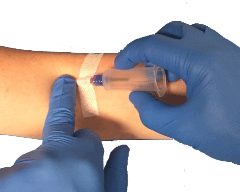
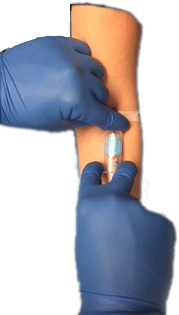
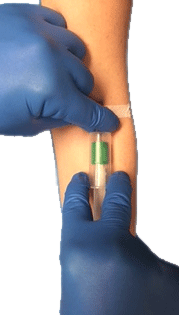
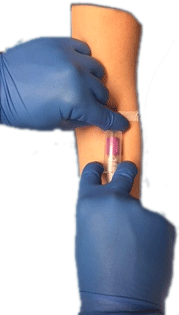
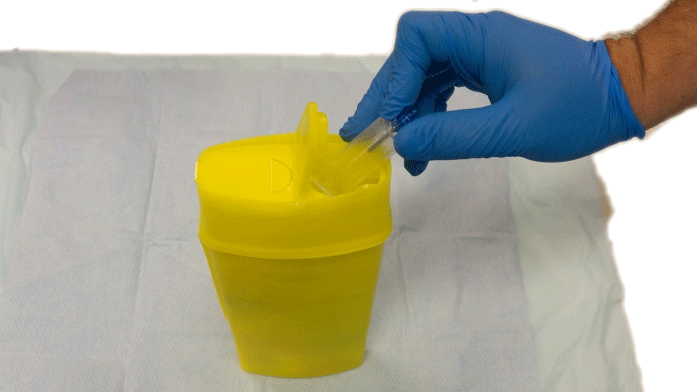
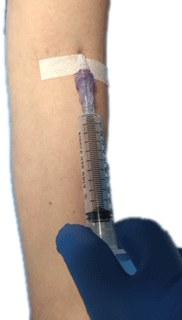
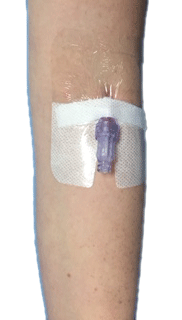
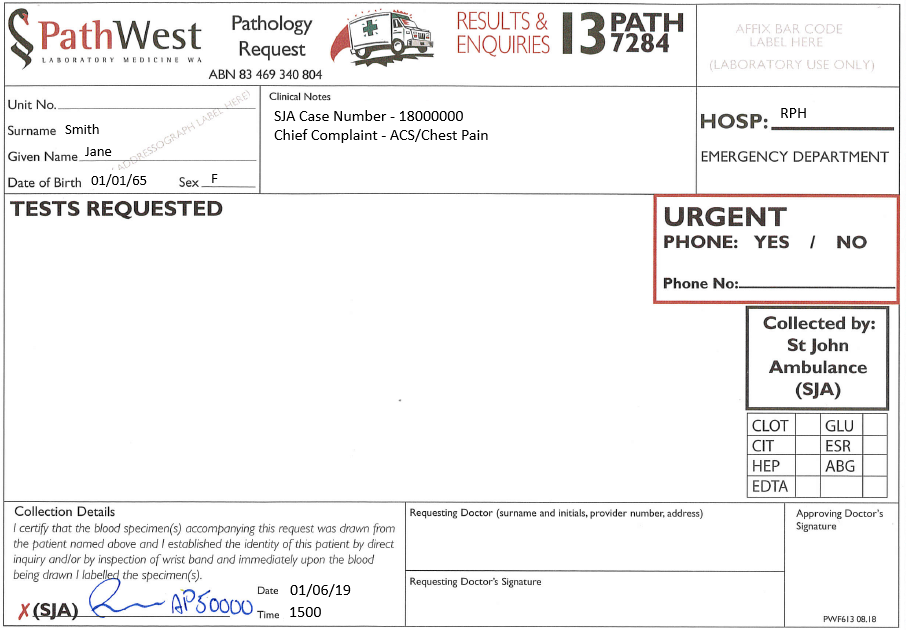

- The multi-sample adaptor is classed as a sharp.
- It should ideally be disposed of in the large sharps container. Alternatively it can be disposed of in the smaller sharps container by gripping the multi-sample adaptor by the Luer-Lok end and placing it open-end first into the sharps container.
- DO NOT place your finger into the chamber of the adaptor at any time.
- For more information, see PathWest site or PathWest Tube Collection Guide.
| Settings | |
|---|---|
| Extended Care: | |
| Colour assist: | |
Document Control
Clinical Resources Website
St John Ambulance Western Australia Ltd (ABN 55 028 468 715) (St John WA) operates ambulance and other pre-hospital clinical services. St John WA’s Clinical Resources, including its Clinical Practice Guidelines (Clinical Resources), are intended for use by credentialed St John WA staff and volunteers when providing clinical care to patients for or on behalf of St John WA, within the St John WA Clinical Governance Framework, and only to the extent of the clinician’s authority to practice.
Other users – Terms of Use
The content of the St John WA Clinical Resources is provided for information purposes only and is not intended to serve as health, medical or treatment advice. Any user of this website agrees to be bound by these Terms of Use in their use of the Clinical Resources.
St John WA does not represent or warrant (whether express, implied, statutory, or otherwise) that the content of the Clinical Resources is accurate, reliable, up-to-date, complete or that the information contained is suitable for your needs or for any particular purpose. You are responsible for assessing whether the information is accurate, reliable, up-to-date, authentic, relevant, or complete and where appropriate, seek independent professional advice.
St John WA expressly prohibits use of these Clinical Resources to guide clinical care of patients by organisations external to St John WA, except where these organisations have been directly engaged by St John WA to provide services. Any use of the Clinical Resources, with St John WA approval, must attribute St John WA as the creator of the Clinical Resources and include the copyright notice and (where reasonably practicable) provide a URL/hyperlink to the St John WA Clinical Resources website.
No permission or licence is granted to reproduce, make commercial use of, adapt, modify or create derivative works from these Clinical Resources. For permissions beyond the scope of these Terms of Use, including a commercial licence, please contact medservices@stjohnambulance.com.au
Where links are provided to resources on external websites, St John WA:
- Gives no assurances about the quality, accuracy or relevance of material on any linked site;
- Accepts no legal responsibility regarding the accuracy and reliability of external material; and
- Does not endorse any material, associated organisation, product or service on other sites.
Your use of any external website is governed by the terms of that website, including any authorisation, requirement or licence for use of the material on that website.
To the maximum extent permitted by law, St John WA excludes liability (including liability in negligence) for any direct, special, indirect, incidental, consequential, punitive, exemplary or other loss, cost, damage or expense arising out of, or in connection with, use or reliance on the Clinical Resources (including without limitation any interference with or damage to a user’s computer, device, software or data occurring in connection with such use).
Cookies
Please read this cookie policy carefully before using Clinical Resources from St John WA.
The cookies used on this site are small and completely anonymous pieces of information and are stored on your computer or mobile device. The data that the cookies contain identify your user preferences (such as your preferred text size, scope / skill level preference and Colour Assist mode, among other user settings) so that they can be recalled the next time that you visit a page within Clinical Resources. These cookies are necessary to offer you the best and most efficient possible experience when accessing and navigating through our website and using its features. These cookies do not collect or send analytical information back to St John WA.
Clinical Resources does integrate with Google Analytics and any cookies associated with this service enable us (and third-party services) to collect aggregated data for statistical purposes on how our visitors use this website. These cookies do not contain personal information such as names and email addresses and are used to help us improve your user experience of the website.
If you want to restrict or block the cookies that are set by our website, you can do so through your browser setting. Alternatively, you can visit www.internetcookies.com, which contains comprehensive information on how to do this on a wide variety of browsers and devices. You will find general information about cookies and details on how to delete cookies from your device. If you have any questions about this policy or our use of cookies, please contact us.